Continuing with Technical SEO
Technical SEO covers a vast array of elements that sit behind the front end of a website. These all help to increase crawlability, content discovery and server side optimisation that all work together to give the user the best experience possible.
We covered a number of points in part 1 of our technical SEO checklist including, XML Sitemaps, the robots.txt file, linking content together through internal linking and migration from HTTP to HTTPS. Covering these areas and those covered in this post should help you continue your journey to a well optimised and user-friendly website.
In part two of our technical SEO checklist, we look at:
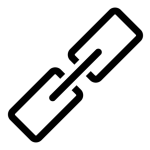
Check for broken links
What are broken links?
Broken links can be either; links to content that sit on your website. These can be either internal links or links to another website. These are external links.
Search engines see links; both internal and external, as a “vote of quality”. Too many broken links can negatively affect a site’s performance from both a user and search engine perspective.
Why do you need to fix broken links?
Resolving broken links can enhance a user’s experiences of a website. They don’t necessarily need to know that content has been moved (or removed). Ultimately, they are looking for information or wanting to convert.
Fixing a broken link will mean you will need to add a redirect; this is covered in the next point.
How do I find broken links on my website?
There are a number of tools that can be used to find broken links on a website. Google Search Console (GSC) or Bing Webmaster Tools, if linked to your site, are a good place to start. These are both free tools and let you see how search engines see your site. They also provide a wealth of other information.
Other tools do exist that are free, but you could also look at paid tools. If you are looking for additional insight that covers more than just broken links, SEMRush, Ahrefs and Moz are some of the more popular tools.
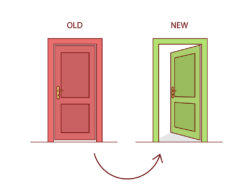
Check your redirects
What are redirects?
A redirect is a simple function that sends a user from one URL (Uniform Resource Locator) to another. These are usually set up on a website where pages have been removed or changed so that the user (or search engine) does not hit a dead-end – typically a 404 page.
Types of redirects
There are 3 types of redirects to be aware of:
301 – A permanent redirect. The page the user is being redirected from is no longer that and it will never come back.
302 – A 302 now means “Found”. The page is not currently available to a user but will come back. The user will be redirected to the new page, but search engines will still keep the old URL the same.
307 – A temporary redirect. This is the spiritual successor to a 302 response code, but in essence, there is no real difference from a user’s perspective.
Why do you need redirects?
Redirect are needed to ensure a user’s journey is not interrupted and they can find the desired content on your website.
If no redirects are employed and content has moved (or been removed), a user is likely to hit a 404 page not found. 404’s naturally occur, but too many 404 that are created through content disappearing and not being replaced in some way are detrimental to a site’s performance. These will cause users to leave the site, also known as a “bounce“.
You will need to ensure the content a user or search engine is being redirected to is relevant to the page that is no longer accessible.
If this is a “service’, for example, the user should be directed to a similar “service” page. If this is not possible, they should be directed to a category landing page. This is a page that summarises all available services, so the user can then make an informed decision as to where to go next.
Review your redirects
When you look at adding redirects to a website, you will also need to check for redirect chains. These need to be eliminated, where possible. The reason for this is, after each “hop”, link equity starts to be lost after the first redirect.
What are redirect chains?
These happen when there are multiple redirects to get from one URL to another. This happens when one URL redirects to another page, then another redirect is added to the second page to lead to a third page, and so on.
Here is an example
Page A > Page B > Page C
In this instance, it is best to remove the redirect to “Page B” from “Page A” to remove the “chain“. You will then need to create a new redirect from “Page B” to “Page C”.
The update should now look like this
Page A > Page C
Page B > Page C
This ensures any authority from Page A is passed directly to Page C and isn’t lost through the extra hop.
The authority built by Page B will also be passed on to Page C
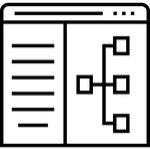
Check your structured data
What is structured data?
Structured data comes in a number of forms. These include JSON-LD (JavaScript Object Notation for Linked Data), Microdata and RDFa (Resource Description Framework in Attributes) and utilises Schema markup.
JSON-LD is the recommended format both Google and Bing use for reading data.
This adds extra information to a page or website. This can include opening hours, pricing and review ratings and is used by search engines to provide additional information in search results. This can help users make a more informed choice before they click through to your website.
Extra tip: When creating structured data markup, the code needs to be added directly to the HTML of your website. This cannot be done through Google Tag Manager (GTM) for example, as it will not be loaded when the page is crawled.
Why do you need structured data?
Providing as much information about your business, the content on your website (articles or blogs) and the products/services on offer helps users make an informed choice before they click through to your website.
The important thing to remember is, it can also help with off-site actions too. The structured data on your website can help verify information in your Google My Business (GMB) listing, for example. It provides a link between your GMB page and your website.
You can also increase your presence on the search results page, by appearing in the lucrative “Position 0” by providing answers to user queries. This increases your overall visibility and trust. It can also help build your authority.
Note: There is no guarantee that implementing structured data on your website will improve your search presence, but it will increase your chances. There are a number of factors that determine how and what extra information is shown.
What does structured data look like?
Organization Schema Example
As JSON-LD is the recommended format, the below example shows an example of “Organization” mark-up
{
"@context": "http://schema.org",
"@type": "Organization",
"name": "Fifteen",
"alternateName": "Fifteen Design",
"url": "https://www.fifteendesign.co.uk/",
"logo": "https://www.fifteendesign.co.uk/wp-content/themes/fifteendesign/assets/img/fifteen-logo-square.png"
}
This can be enhanced further with contact numbers for the business as well as different departments.
LocalBusiness Schema Example
Here is an example of the “LocalBusiness” schema mark-up for Fifteen. This will help support users wanting to find the business address and is likely to trigger the GMB listing – bases on a user query.
{
"@context": "http://schema.org",
"@type": "LocalBusiness",
"name": "Fifteen",
"image": "https://www.fifteendesign.co.uk/wp-content/themes/fifteendesign/assets/img/fifteen-logo-square.png",
"@id": "https://www.fifteendesign.co.uk/",
"url": "https://www.fifteendesign.co.uk/",
"telephone": "0115 828 1835",
"priceRange": "££-£££",
"address": {
"@type": "PostalAddress",
"streetAddress": "Media House",
"addressLocality": "Nottingham",
"postalCode": "NG9 2RS",
"addressCountry": "GB"
},
"geo": {
"@type": "GeoCoordinates",
"latitude": 52.92794,
"longitude": -1.1978960000000143
},
"openingHoursSpecification": [{
"@type": "OpeningHoursSpecification",
"dayOfWeek": [
"Monday",
"Tuesday",
"Wednesday",
"Thursday"
],
"opens": "09:00",
"closes": "17:30"
},{
"@type": "OpeningHoursSpecification",
"dayOfWeek": "Friday",
"opens": "09:00",
"closes": "17:00"
}],
"sameAs": [
"https://www.facebook.com/FifteenDesign",
"https://twitter.com/fifteenagency",
"https://www.instagram.com/fifteenagency/",
"https://www.youtube.com/user/fifteendesign",
"https://www.linkedin.com/company/fifteen-design"
]
}
This can be enhanced to include a map, alternate business names; so Fifteen could appear for other user queries, multi-business locations and more. Schema structured data can be as flexible as you need it to be
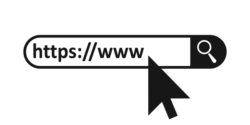
Create a clean URL structure
What is a clean URL structure?
Clean URLs have many different names, including semantic URLs, RESTful URLs, user-friendly URLs or search engine-friendly URLs, but their functions are all the same.
They take a more descriptive, easy to remember form which is free from parameters or query string and file extensions, unlike a dirty URL.
This does not include user-friendly files like PDFs, Word docs, Excel files, but more of the content files used to build the webpage.
The “slug” is the readable part of the URL. The “slug” is the part of the URL after the website’s domain.
Clean URL example
https://www.fifteendesign.co.uk/digital-marketing/seo/
This is descriptive and provides the user (and search engine) with an understanding of where the content sits on the website, but also the topic of the content on the page.
This is also has added advantages from a usability and accessibility point of view too.
Dirty URL example
https:://www.fifteendesign.co.uk/products?category=12&pid=25
From a user perspective, they do not know what the content of this page holds. Ultimately, they both take the user to the same content.
It’s not easily remembered, it’s not user friendly.
From a search engines point of view, the page will be crawled and indexed just like any other. When a user searches for a relevant query, the page will be displayed.
All things being equal with a competitor, a clean URL is likely to be ranked higher than a dirty URL.
Why is a clean URL important for SEO?
There are a number of reasons to use a clean URL structure for your website, but here are our top 5
- Includes keywords related to the page
- The shorter, more descriptive a URL is, the better
- Products/Service categorised easily
- Build topical authority
- Future proof your site

Submitting changes to Bing
Having covered “Submitting changes to Google” in part 1, we’re now looking at how to submit changes to Bing
As briefly mentioned in the last post, Bing also provides results for other search engines, including (but not limited to) Yahoo!, AOL, DuckDuckGo and Ecosia. Each is a different avenue to find and discover your website’s content, which is why Bing should not be ignored.
How do you submit changes to Bing?
To submit changes you have made on any of your pages to Bing, you will need to ensure your site is verified through Bing Webmaster Tools. This can be done in a similar way to Google, by adding a single line of HTML to your website.
Assuming your website is already verified, navigate to
Configure My Site > Submit URLs
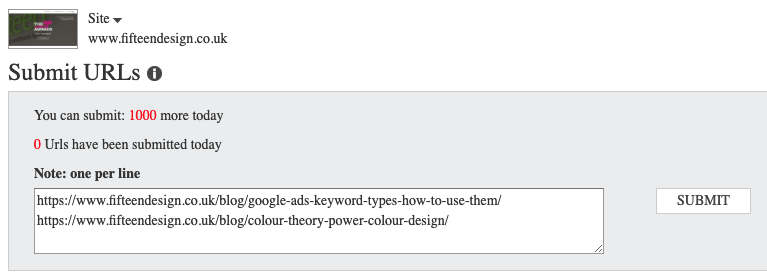
You can add multiple URLs at a time here. Simply paste each URL you want to submit on a new line.

Once submitted, Bing will priories the crawl and the new pages should appear within Bing’s results pages shortly
Why should you submit changes to Bing?
Submitting pages to Bing, either new or ones that have been heavily updated is a good thing to do, as it ensures the correct content is being served in the SERPs (Search Engine Results Pages).
If the content is out of date, when a user clicks the link in the SERPs and finds that it is different to what they were expecting, they are likely to bounce off your site. In Bing’s eyes, this makes it look like the content isn’t relevant to the user search, so you are likely to lose ranking.
From a user’s point of view, it could be potentially damaging to a brands reputation as they will lose trust in your site as a source of reliable information.
So, rather than waiting for Bing to recrawl your pages, it’s best to submit them yourself to keep your content up to date.
If you need any assistance with your SEO strategy, from Local to technical, outreach and link-building, get in touch with Fifteen’s experts today.
